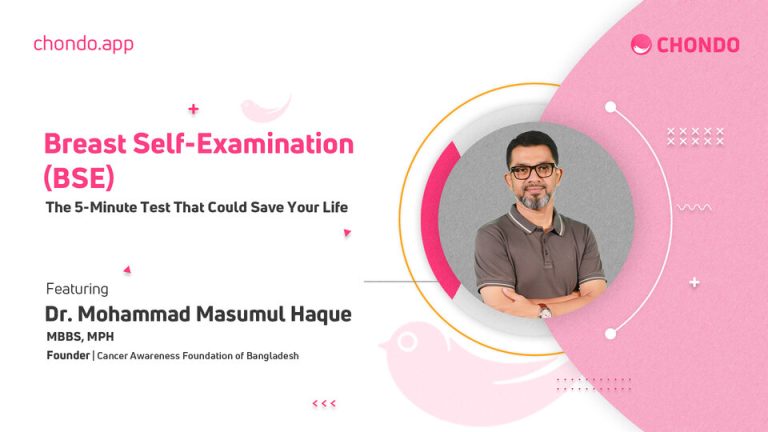Body Dysmorphic Disorder: A Guide to Understanding and Treating This Debilitating Condition
If we consider the situation in Bangladesh, a girl baby faces judgements regarding her complexion and is subjected to many beauty standards from her hair to toe as soon as she is born. We grow up hearing such comments and internalize judgments ourselves. Therefore, we joke around with our friends saying “You’ve gotten fat”, “You look darker now” and more. But have we ever considered that such comments regarding people’s looks can hurt the person, make them feel low mentally, and create insecurities? Sometimes these take complicated turns and make the person mentally ill. Hence, while these comments may seem harmless at a glance, they can lead to something dangerous.
Many people develop bad thoughts about their physical appearance. They start thinking unnecessary thoughts about their body shape or outer appearance which results in harmful feelings. In fact, some people even stop going to school, college or workplace because of such thoughts. In psychology, this is called Body Dysmorphic Disorder. Both males and females can suffer from this. However, for girls, the number is higher due to periods, societal norms, family behavior, comments, toxic relationships with their partners, and sexual assault. Period or menstruation is one of the most significant reasons since it brings various physical and mental changes. So, during this period, hormonal changes along with other elements increase risk factors.
What is Body Dysmorphic Disorder?
Body dysmorphic disorder is a type of mental illness where people develop illogical and harsh views of their body shape and facial structure. These people commonly have severe thoughts about their nose, complexion, ears, lip shapes, etc. This leads to them frequently analysing their features on mirrors and asking family members and friends questions about their faulty features. They have tendencies to develop stubborn hateful thoughts about their “abnormalities” and to distance themselves from society. Some people begin to have mental pressure that they become obsessed with having plastic surgery to fix their faulty features. However, even after such procedures, they do not understand that their thoughts are not right.
People who have no physical faults and those who have faults that are not visible at a glance, are prone to having disappointing thoughts if they find any physical “mistakes”. Body dysmorphic disorder is more prevalent among women than men. Experts consider BDD to be part of a bigger mental illness, Obsessive Compulsive Disorder (OCD). BDD is one of the notable parts of the OCD spectrum. OCD has certain genetic and biological elements which can be found in BDD as well.
History:
Italian psychologist Enrico Morselli, in 1891, was the first to shed light on BDD. He named it dysmorphia. It comes from the Greek word ‘dysmorphia’ which means ugly. This word was first noted in the historical works of Herodotus.
Afterwards, another French psychologist Pierre Janet named this disorder ‘l’obsession de la honte du corps’ or ‘Obsessions of shame of the body’ and included it within Obsessive Compulsive Neurosis. In 1980, this disorder was called ‘Atypical somatoform disorder’ in the 3rd edition of the Mental Disorder Classification (DSM-II) made by the American Psychiatric Association. In 1987, it started being referred to as Body Dysmorphic Disorder. World-famous superstar singer Michael Jackson suffered from Body Dysmorphic Disorder. Despite the objections of his doctors, he had 11 cosmetic surgeries done. Moreover, writers such as Franz Kafka and Sylvia Plath suffered from this disorder.
Symptoms:
- Incoherent thinking is observed.
- Always feeling insecure about oneself.
- Unnecessary thoughts about body shape.
- Developing rage and frustration.
- Tendency to isolate oneself from social events because of “faulty” physical features.
- Tendency to analyze oneself in the mirror too often.
- Tendency to have surgery to fix the bad features they are insecure about. However, the insecurity does not leave them after such procedures. In fact, this propels them into wanting more surgeries.
- Always comparing oneself to others.
- Some develop suicidal thoughts.
Causes:
No definite reasons behind BDD have been discovered yet. Both women and men can develop this disorder. There are some factors that increase the risk of triggering body dysmorphic disorder:
- If someone in the family has mental health problems.
- Excessive perfection attitude which creates unbearable mental frustration. This can lead to the development of BDD.
- Victim of jokes or comments regarding physical appearance by family, friends, and society.
- Victim of bullying.
Besides these, Thalamus filtering of thoughts is at work here. Research has shown that for people for whom this process does not work properly, they tend to have compulsive thoughts. Furthermore, their brain’s Structural Defect or Structural Deformity could also cause BDD.
Treatment:
Body dysmorphic disorder requires Combined Treatment. There are three phases to BDD treatment- physical, mental, and social.
Physical treatment: The patient is observed and given medicine, such as antidepressant drugs, after examinations.
Mental treatment: For people suffering from BDD, mental treatment or counselling is a long process. They require a session each week with 12 in total.
Social treatment: People living with BDD patients also require counselling. Family members need to comprehend that this is not a problem that should be ignored. Thoughts of wanting surgeries should not be entertained. Loved ones need to be aware of such situations. Overall, this treatment consists of making the people around the patient aware and teaching them proper behaviour towards the patient.
Not all patients will have the same outcome after treatment. As human beings, we should be more empathetic towards one another. We should be careful lest our comments should make someone feel low.
Instead, positive words and praises can make the person opposite us feel more confident and change their lives.
Download Chondo App
Track your period and get notified.
Download
Beta







